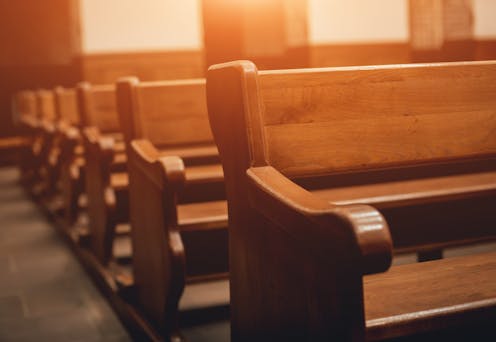
The resignation of Justin Welby as Archbishop of Canterbury has returned the spotlight to the permacrisis of abuse in religious communities. Welby resigned after an independent review found the Church of England had covered up serial abuse by John Smyth QC.
The review described Smyth’s abuse of more than 100 young boys as “prolific, brutal and horrific. His victims were subjected to traumatic physical, sexual, psychological and spiritual attacks.” The report found that this was not just a case of Smyth as a “bad apple”, but of systemic institutional failings in the church. Similar themes were found in a 2020 report into safeguarding in the Anglican Church.
As noted by the Independent Inquiry into Child Sexual Abuse, this problem is not limited just to the Church of England but affects other religious institutions in the UK, and beyond.
The church can be seen as a form of “closed community”. These take on different forms. Some are geographically isolated from the wider world, for example convents and monasteries. Others, like the Church of England, may be public facing, but can harbour attitudes about how to police and respond to harm that differ from those in wider society.
For those who research child sexual abuse in religious communities, Smyth’s crimes and the subsequent coverup are as unsurprising as they are galling. Narratives of morality and virtuousness associated with religion shape an institutional culture that stops victims from seeking support, for fear of being shunned or not believed. This culture of silence allows sexual abuse to continue unchecked for long periods.
But it is not exclusive to religious communities. Sports clubs and youth groups such as the Scouts, for example, can also be seen as closed communities. This is because in both cases, norms and values within an organisation can be out of kilter with wider society.

The volume of sexual abuse in any closed community is difficult to know. In one study, one in 250 Australians was found to have been abused by adults in religious organisations. In sporting communities, estimates vary from 2% to 49% of people experiencing abuse depending on the sport, age and gender. Among UK Scout groups, 166 cases – including historic ones – have been settled in the past 10 years. There have been over 60,000 known cases among the Boy Scouts of America.
There are a number of reasons that abuse occurs in closed communities. The outsize roles of trust, power and authority in organisational leaders can give way to grooming processes. This can create a sense of disbelief – firstly by the victim that they’ve been abused – and then by others in the wider community.
This in turn can lead to the stigmatisation, shunning and exclusion of those who do raise concerns, leading to further isolation. Combined, these elements act as significant barriers to reporting and accountability. In some cases, abuse might be trivialised or downplayed to protect the reputation of an organisation and ensure its survival.
Influence and change
The knock-on effects of abuse in closed communities can be profound for victims and their families. While cases are covered up to protect reputations, their emergence can result in precisely the opposite occurring. As researchers in sport communities have found, organisations may face a loss in public confidence and support, and a drop in financial investment as others seek to distance themselves from the toxicity of the brand.
Given the societal reach and influence of the Church of England, it is unlikely that this case presents an existential threat to the organisation. However, with the significant decline in people describing themselves as Christian between 2011 and 2021, the institution already faces a challenge in making a case for its ongoing contemporary relevance, role and influence within society.
There have been calls for independent external scrutiny and revised safeguarding systems and practices in the Church of England, and more senior members of the clergy may need to resign.
This process of redemption will undoubtedly be a long and arduous one, and will need to be accompanied by significant root and branch reform. The church will likely follow the lead of other closed communities in opening itself up to greater external scrutiny while rapidly implementing new safeguarding policies, practices and training. This can in turn help to improve transparency and safeguarding.
Much more work is needed to support closed communities in preventing abuse, and in supporting victims and whistleblowers of such communities should allegations of abuse emerge.
![]()
Ian Mahoney is a trustee for his local scout group.
Kirsty Teague is a Trustee of the Safer Living Foundation.



